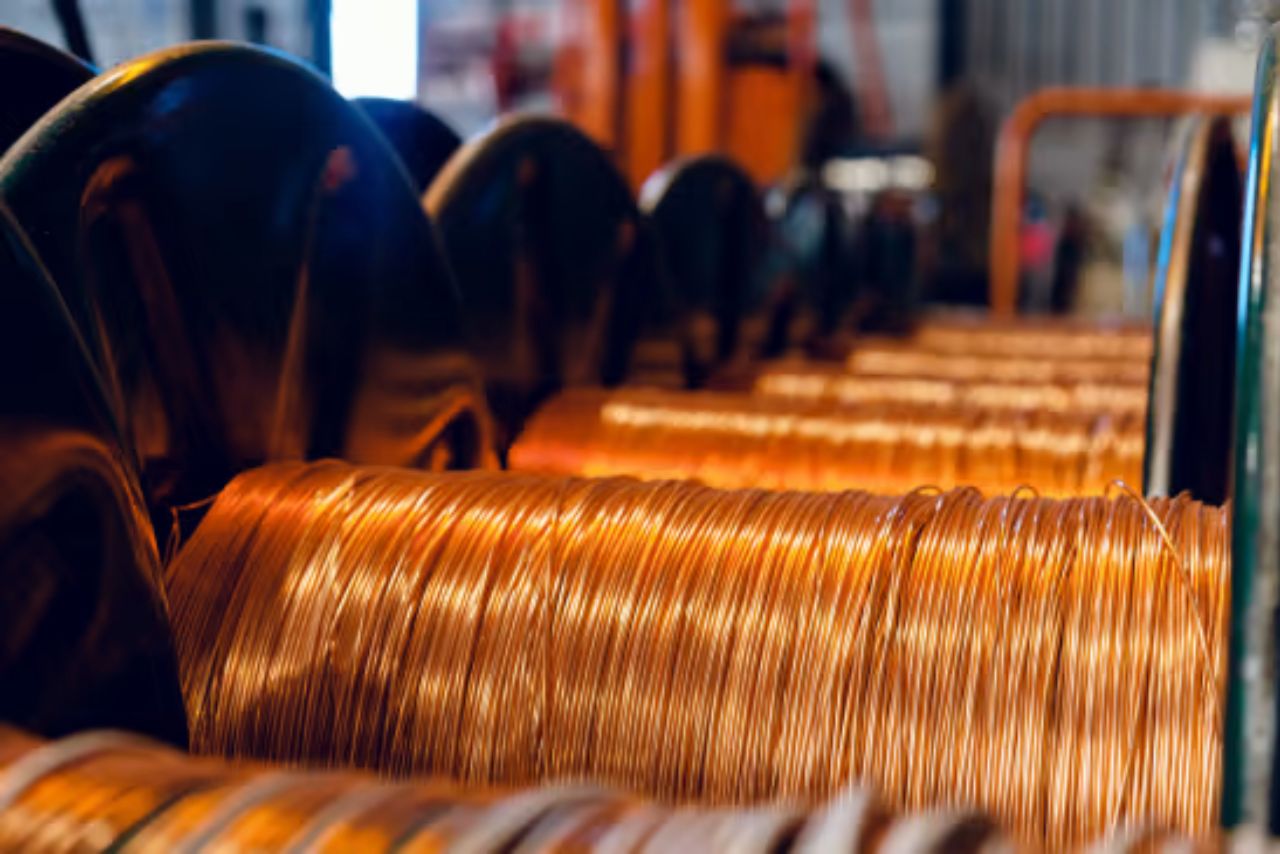

Copper, often called the “red metal,” plays a crucial role in various industries, especially electronics. Its excellent conductivity makes it indispensable for electrical wiring, circuit boards, and connectors in smartphones, computers, and other devices. Moreover, copper’s durability and corrosion resistance make it ideal for plumbing, construction, and transportation.
In the growing renewable energy sector, copper is essential for solar panels, wind turbines, and electric vehicle components. As the world moves towards cleaner technologies, copper’s importance in electronics and green energy solutions continues to increase.
Maintaining stable raw material prices, including copper, is vital for any country’s economic health. Price stability helps businesses plan and budget effectively, reducing uncertainty in production costs. It also supports consumer purchasing power and prevents inflation from
eroding living standards. Stable raw material prices contribute to a country’s competitiveness in global markets, attracting investments and fostering economic growth.
Factors Driving Copper’s Rally
Supply constraints and market shifts: With the closing of the Cobre Panama mine, a major global copper supply, market expectations have switched from surplus to deficit. This event, together with Chinese smelters’ reduced output owing to concentrate shortages, has contributed to copper’s price increase. The mix of speculative buying and true supply restrictions indicates that the copper market may remain positive for the foreseeable future. Many copper-focused equities are now trading at or around 52-week highs, suggesting investor optimism about the sector’s future.
Renewable Energy and Electric Vehicle Demand: Copper’s crucial role in the shift to net-zero emissions is fueling unprecedented demand. Solar photovoltaics and wind turbines, for example, require large amounts of copper to provide effective electricity transmission and distribution. Copper is significantly used in electric vehicles for components including motors, inverters, and electrical wiring. According to industry projections, yearly copper demand may need to treble to 50 million metric tons to fulfill aggressive net-zero ambitions by 2035. Even cautious forecasts foresee a one-third growth in demand over the next decade.
Global Economic Factors and Future Outlook: While uncertainties surrounding China’s economic recovery pose challenges, analysts forecast an upward trajectory for copper prices in 2024 and beyond. Supply-demand imbalances, the US rate-cutting cycle, and increasing demand from the green energy sector are expected to drive prices higher. Long-term copper price forecasts remain uncertain but are expected to stay elevated due to the ongoing energy transition. As nations compete for limited future supplies, securing domestic or friendly sourcing and refining capabilities for copper becomes increasingly strategic.
Also read…
Impact on the Indian Economy
The rallying copper prices are likely to have significant implications for India’s economy, particularly in sectors related to electric vehicles (EVs), renewable energy, and consumer durables. EV and renewable energy stocks may experience mixed effects. On one hand, higher copper prices could increase production costs, potentially squeezing profit margins.
However, the growing demand for these technologies could offset cost pressures, leading to overall positive sentiment in these sectors. Investors might view these stocks as long-term growth opportunities despite short-term challenges.
Consumer durable goods stocks, which rely heavily on copper for products like air conditioners, refrigerators, and washing machines, might face more immediate pressure. Higher input costs could lead to price increases for end consumers, potentially impacting demand.
However, companies with strong brand presence and efficient supply chain management may be better positioned to weather these challenges. The government’s push for domestic manufacturing under initiatives like “Make in India” could also provide some cushion for these industries.
Conclusion
Overall, while rising copper prices present challenges, they also underscore India’s need to focus on resource efficiency, recycling, and the development of alternative materials. This situation could spur innovation in the manufacturing sector and accelerate India’s transition towards a more sustainable and resource-efficient economy.
As the country continues its ambitious renewable energy and electric mobility goals, managing the impact of copper prices will be crucial for maintaining economic growth and industrial competitiveness.
Written By: Dipangshu Kundu
The post How recent rally in copper prices will affect the Indian Manufacturing segment? appeared first on Trade Brains.

